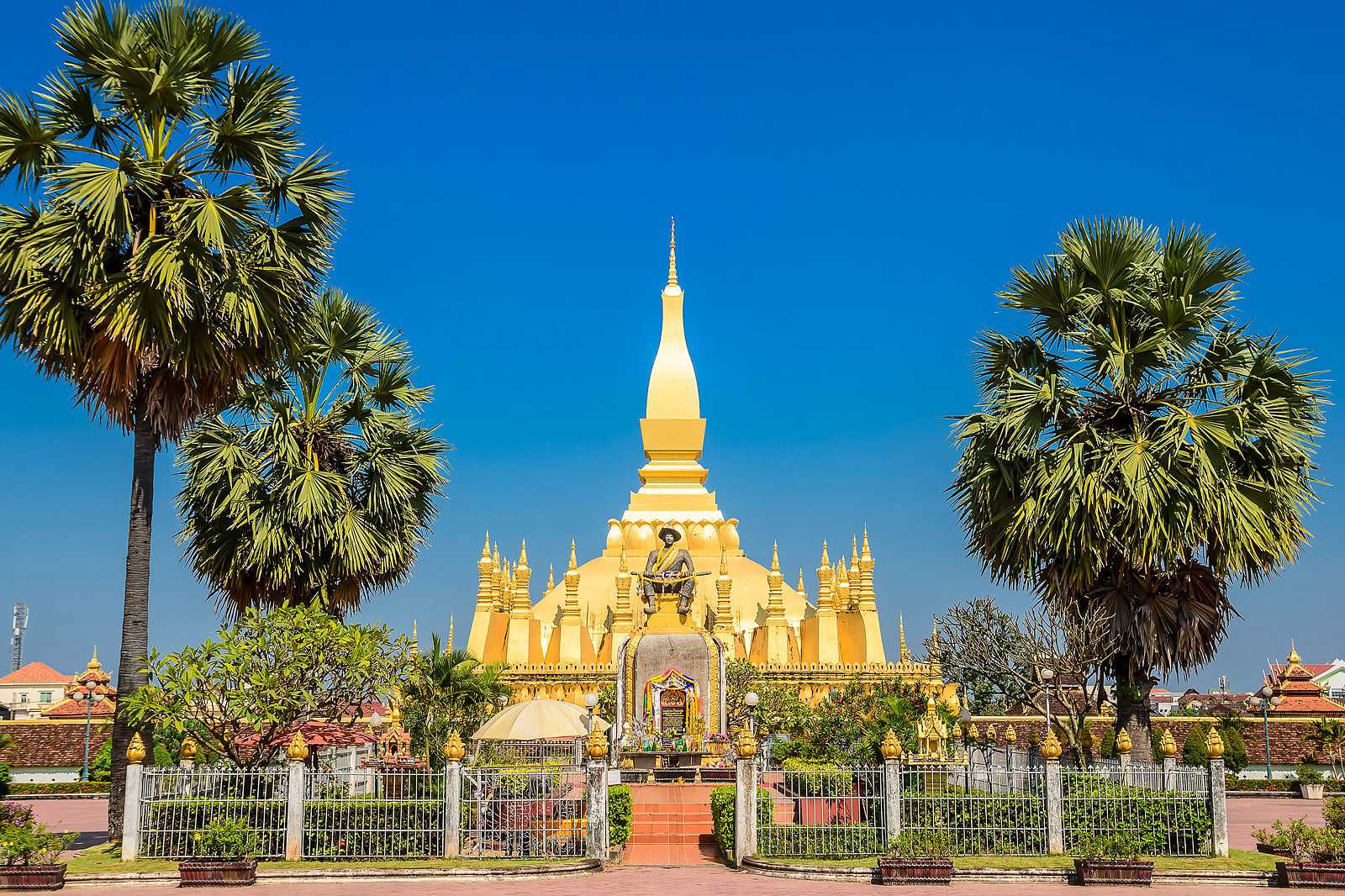Laos traces its history to the Lower Paleolithic period – stone tools and skulls were discovered in Huaphan and Luang Prabang provinces. The famous Plain of Jars in Xieng Khouang province and stone columns in Huaphan province date back to the Neolithic period. Over centuries, rural settlements in Laos grew slowly to muang (townships) along the Mekong River.
King Fa Ngoum (1349–1357) began grouping the muang into a unified Lan Xang kingdom, basing the capital at Xiengdong Xiengthong, now known as Luang Prabang. Fa Ngoum was also a warrior – between 1353 and 1371, he invaded and conquered territories that make up present-day Laos and most of northern and eastern Thailand.

The 'golden age' of Laos
The capital was moved to Vientiane in 1560, during the reign of King Setthathirath, who erected the That Luang, a venerated stupa known as the symbol of Laos. The warring Burmese occupied the capital for 7 years from 1575, reflecting their dominance over Southeast Asia at that time. In 1591, the 2 Laotian kingdoms in Luang Prabang and Vieng Chan were reunited under King Nokeo Koumane’s reign.
In the 17th century, under the region of King Souliyavongsa, the kingdom entered its ‘golden age’ and gained increasing attention from Europe. Reports, written by Dutch merchants from the East Indian Company, describe a land of magnificent palaces, temples, and awe-inspiring religious ceremonies. Vientiene was at the time known as one of the most beautiful cities in Southeast Asia.

foto de Stefan Fussan (CC BY-SA 2.0) modificada
From Thai to French rule
At the end of the reign of King Souliyavongsa, feudal lords challenged the throne. In 1713, this led to the division of the country into 3 kingdoms: Luang Prabang, Vientiane, and Champasak. This rift and disunity created opportunities for invasion, in particular, from Siam. By the end of the 18th century, most of Laos was under Siamese (Thai) rule, leading to a costly war in the 1820s. This ended in all 3 kingdoms being ceded to the Thais.
But with the expansion of French Indochina in the late 19th century, the Thais eventually relinquished Laos to the French. In 1893, Laos became a French colony. The French organised this territory as a protectorate, with its administrative centre at Vientiane, and granted it autonomy in local matters. The catalyst for change was the WWII Japanese occupation of Indochina when a Lao resistance group named Lai Issara was formed to prevent the return of the French.

Modern era of Laos
Independence was granted in 1953, but internal feuding between neutralist and communist factions was to continue for several years. When the USA bombed North Vietnamese troops on the Ho Chi Minh Trail in eastern Laos in 1964, it fueled the conflict between the royalist Vientiane government and communist Pathet Lao, who supported the North Vietnamese.
A coalition government was formed, but with the fall of Saigon in 1975, most of the royalists fled to France. Pathet Lao took control of the country and established the Laos People's Democratic Republic in December 1975. Throughout the 1980s, Laos maintained friendly relations with the Vietnamese communists.
Since 1989, there has been a move towards a market economy, and a general relaxation of restrictions, including the emergence of a young tourism industry. In a landmark event, Laos joined hands with its neighbours and became a member of ASEAN in July 1997.



















